Food Memories with Shivani Kulkarni
- The ICCP

- Mar 8, 2023
- 13 min read
Updated: Jan 24, 2024
In this interview, Shivani Kulkarni tells us about the food memories associated with her Gowd Saraswat community.
1. Please give us a brief introduction about yourself.
I am a 25 years old (as of 2023) Mumbaikar born to Wadkar-Goan Saraswat Mother and Karwari Saraswat Father. Having a diverse educational background in Commerce and Interior cum Product Styling, I have primarily worked full-time as a Stylist in the glamorous Home & Product Styling Industry. I believe that Food is and will always be my first love. During the 2020 Worldwide Covid lockdown, thanks to the inevitable work-from-home setup, while I was busy planning from the comfort of my home all the Styling projects; I parallelly, whenever free, utilized the time to cook and learn from my Mother our community’s cuisine. I was familiar with the dishes but never knew how to cook them or why they are cooked the way they need to be cooked. I used to derive immense joy learning the nuances of cooking the recipes, and asking a lot of questions to my mother which helped me enlighten myself with the culinary wisdom passed on by my granny, grand-aunt to my mother, and then from my mother to me.

Shivani Kulkarni
Realizing the need to save the precious pearls of wisdom as well as the treasure trove of our family and community recipes, without a second thought, I gave birth to my Food Page and Blog Authentic Swaad on Instagram. But even post Authentic Swaad’s inception, for a year, I continued working full time as a Stylist which very organically made me sporadic on Authentic Swaad. One day, you may call it a gut feeling or “the calling”; I took the decision to quit my Stylist job. From the very next day, I started giving all my attention to Authentic Swaad and I consider it the best decision.
2. Who are Saraswats? Where do they come from?
Saraswat Brahmins are said to have descended from a Brahmin caste mentioned in ancient Hindu scriptures as inhabiting the Saraswati River valley in Northern India. Many centuries ago, the river Saraswati started vanishing underground and the people on its bank started migrating to other parts of India. They migrated to Gowd Desh (Present day Bihar and Bengal) and later to Goa, and down South in Karnataka coast up to Kerala – Hence the community derived the name Gowd Saraswat- (Gowd meaning coming from the north).
3. In which regions can the Gowd Saraswat community be located?
Today, the Gowd Saraswat Brahmins (GSBs) can be majorly found in the coastal parts of India i.e. Konkan, Maharashtra, Goa & Karnataka. As per the regions, they identify themselves as follows: Gowd Saraswat Brahmins hailing from
Sawantwadi call themselves Wadkar GSB
Goa call themselves Goan GSB
Karwar, Belgaum, Hubli, Dharwad, Ankola, and Kumta call themselves NKGSB (North Kanara Gowd Saraswat Brahmins)
Mangalorean Saraswats call themselves SKGSB (South Kanara Gowd Saraswat Brahmins
The primary roots of the GSBs even today are these coastal parts of India. But many families, in the 1900s, migrated to cities like Mumbai, Pune, and quite a few in Nagpur as well in search of a source of livelihood and today have made these cities their permanent address. (Mumbai has a greater number of GSBs thanks to the Arabian Sea and the availability of seafood). Also, with opportunities outside one’s home country, today the GSB Samaaj have proudly made countries like USA, UK, Singapore and many other parts of the World their home.
4. Are there any particular ingredients specific to the Gowd-Saraswat community?
Since the community is based close to the coastline, we are organically blessed to have coastal produce and we see to it that every possible ingredient grown here is used to prepare the food. The ingredients specific to our Community are:
Coconut is the soul of our cuisine and is used in abundance to make dishes ranging from curries, chutneys, and sweet dishes.
Rice is eaten not only with Dals or fish curries but is also used in sweet dishes like Pais – a Kheer where the essential ingredient is only Rice.
Seafood is a treasure provided by the sea. GSBs are popularly known as “The only Fish Eating Brahmins” and we certainly stick true to this saying. We consume a variety of fish like Bangda (Mackeral), Tarli (Sardine), Paaplet (Pomphret), Surmai (Kingfish), Ravas (Indian Salmon), Nagali (Lady Fish), Soundale (Butterfish), Sungta/Kolambi (Prawns), Teesrya (Clams), Kaalva (Oysters), Chimbori/kurlya (Crabs), Mori (Shark), Chonak (Indian Seabass), Modaka (Silver Baitfish).
Fruits & Vegetables: Mango is rightly called the King of Fruits. But Ghotas which is a variety of small sucking mangoes is dear to us during the mango season. Apart from that in Karwar, Kale Ishad is an indigenous mango variety which is plump with a sweet juicy pulp. These Mangoes' tastes are unique in flavour when compared to the famous Ratnagiri Hapoos.
(Left) Ghota mangoes from Goa; (Right) Kale Ishad from Karwar-Ankola
Jackfruit (Fanas) tree is grown by every GSB household that lives in coastal areas like Goa, Karwar, and Sawantwadi. We consume riped jackfruit to make sweet dishes like Jackfruit Patoli and also the seeds of Jackfruit are used to prepare vegetable curries. Cashews are used in their wet form to give a rich feel to sweet dishes and also in a curry with cashews being the main ingredient. Muskmelon (Tarbooj; Chibood in Konkani language) is available during the summer and a Phov dish (Phov means Poha) mixed with coconut milk and chibood is a prime summer cooling dish. Watermelon – while consuming watermelon we not only eat the red flesh part which is a common practice, but we also put to use creatively the white rind of the fruit to make Poles. (Watermelon Rind Pancakes). Frugality and creativity at its best. Breadfruit (Neerphanas) though in the name it has fruit it actually is a vegetable. Neerphanas are used when mature but not ripe. It has a whitish flesh inside and when sliced it is shallow fried or used to make dry vegetable dishes. Ambade (Indian hog plum) this fruit which looks quite similar to raw mango is used as a souring agent in our vegetarian as well as fish curries.
Legumes-A legume that we Goan Saraswats are immensely proud of is Alsande (Red Cowpea). It looks like your regular Chawli but it is quite distinct in flavour. This legume is majorly grown in Goa.
(Left) Neerphanas; (Right) Alsande
Spices – Aromatics – Souring Agents: When it comes to giving spicy touch to our dishes, particularly Karwari delicacies we use Byadgi Chillies. They are not extremely pungent but their prime work is to render the attractive bright red colour to the curries. Tirphal is related to Sichuan peppercorn, these tiny green berries, turn black when dried. They give off a strong pungent aroma when crushed in water and add a strong flavour to the dish. They are essential in fish curries and some vegetarian dishes. Kokum (in English Garcinia indica) Kokum rinds add a delicious tang to curries and vegetables and are vital in making Solkadhi - a digestive, cool drink which GSBs are proud of. Vatamba Sola (garcinia pictoria in English) is an ash-coloured sour fruit. It grows in and around Karwar and is less widely known than Kokum. It is used as a souring agent in fish curries. Tamarind (Chinch) – the pulp extracted from the tamarind fruit is used as a souring agent. Turmeric Leaves (Haldicha Paan) are used to perfume dishes like Patoli (a sweet dish) and fish preparations. They lend their heady aroma to the dishes. They grow in abundance after the rains and then it is dried in the sun. GSBs preserve a stock of it for use all round year.
Souring agents- (Left) Ambade, (Center) Kokum, (Right) Vatamba Sola
Spices : (Left) Tirphal, (Center) Byadgi Chillies, (Right) Turmeric leaves
5. Tell us about your childhood, the food you grew up eating, and who your culinary influencers/ inspirations are? How is your attachment towards your community?
Childhood and the Food I grew up eating: How will you identify a true GSB? Let me share with you an interesting anecdote – I was a 2 or 3-year-old toddler when my Mother kept in front of me a plate filled with rice, solkadhi, Pomphret fish curry and fried fish. As a toddler, I easily could have been fussy but I happily embraced and gave in to the lip-smacking meal in front of me! I enjoyed every bite of the fish and did not even for a second look up while being engrossed in eating Solkadhi-curry-rice. My mother teases me when reminiscing this memory “Shivani, you proved you are a true GSB”. What more signs should I give of being a True GSB! For half of my childhood, every weekend, I used to visit and spend time with my maternal grandparents who lived in Saraswati Baug - A colony in the western suburb of Mumbai (now its century-old) of only GSB families who had migrated from Karwar, Goa, and Sawantwadi in the 1900s. Coming to Saraswati Baug used to literally transport me as if I were in Goa or Karwar because of the greenery, the calm environment, the Goan-style bungalows where the family had grown jackfruit trees, and coconut trees. The official language of GSBs is Konkani and my exposure to this language was because of the time I spent with the people of Saraswati Baug. All the families spoke and to date speak in Konkani language which as a kid I found different because even though I am a GSB, my mother tongue is Marathi! There is a temple in Saraswati Baug called Rameshwar temple which is home to Lord Mangesh (An avatar of Lord Shiva) and its main branch is based in Goa (The famous Mangeshi temple). My grandparents always took me to this peaceful temple in Saraswati Baug. During the festival, one of the GSB families living nearby the temple vicinity used to serve GSB Style Naivedya (A Prasad/food offered to God) and this is how I was exposed to Saraswat dishes like Kaapi (Veg shallow fried fritters), Khatkhate, Mooga gaathi. For summer vacation, I once visited my Native Place in Karwar to meet my paternal grandma. It was in Karwar when I was 8-9 years old, I for the first time tried Karwari dishes which my grandmother lovingly fed me like "Kalingadache Goad Pole" for breakfast, "Bangdyacha Dhodak" cooked rustically on a woodfire, Fish curries. The best way of getting to know GSB Cuisine is by visiting a GSB Family’s home during the Ganpati celebration! The entire family comes together and enjoys the festival with alacrity. Right from my childhood to the age I am today, the Ganpati Menu is fixed. I have a vivid memory of watching my paternal grandmother sitting on the floor, making with her hand Talniche Modak which I eagerly used to wait to attack once the Ganpati Aartis were done.
Culinary influencer/Inspiration: It’s going to be a clichéd answer but truly my culinary inspiration/influencer is my Mother. Since I am born to half Goan-Wadkar-Karwari parents, the food in my home and that I have grown up eating is a celebration of Saraswat dishes from all these different regions. But do you know, my Mother did not even go to the Kitchen and cook any dishes until she got married! But one thing which is innate in her is her observational skill. When my mother was my age, she used to spend time with her maternal grandmother (A Saraswat Woman having roots from Aldona in Goa) and her aunt (a Saraswat woman hailing from Pedne, Goa). All the ladies coming from Goa made Mumbai their permanent address but used to cook Goan Saraswat dishes in their Mumbai Kitchen and my mother used to enjoy watching these ladies cook the dishes. My Mother was fortunate as her grandmother and aunt fed her all the Goan-Konkan Saraswat dishes like Kairicha Goad Loncha, Kaalya Vaataanyacha Dabdabheet, and Kandamool etc. Her observational skills and taste/flavour memorization power post-marriage aided her in cooking Goan Saraswat Style dishes. In addition to this, she learnt from her mother-in-law (i.e. my paternal grandmother) and sister-in-law all Karwari-style Saraswat dishes. Sometimes I tease my mom that you are a complete GSB cuisine Wikipedia!
My attachment towards my Community – The GSBs are devout in matters of God and Dharma and this is what keeps them attached to their roots. Every GSB Family sees to it that they visit their Kuladaivat (meaning family deity) every year or at least occasionally based primarily in Goa. Whenever my family and I get the opportunity, we see to it that we are visiting Goa to pay respect to our Kuladaivat Shree Shantadurga Temple (Shantadurga is an avatar of Goddess Durga) and Shree Mangeshi Temple (an avatar of Lord Shiva). I tremendously enjoy the tradition of participating in temple fairs and festivals like Vasant Mahapanchami at Shantadurga temple in Goa where the idol of Goddess Herself is carried in a Palkhi (a traditional carrier) which is a beautiful sight to witness and then feasting on the simple but rich No Onion-No Garlic Goan Saraswat Style Naivedhya dishes like Uddamethi, Mooga Gaathi, Mangane, Saasav with gusto. When it is not possible to travel to Goa, I visit Shantadurga temple’s Mumbai Branch called Kavale Math based in Walkeshwar to celebrate Navratri and also Rameshwar Temple in Saraswati Baug which is Mangeshi Temple’s branch in Mumbai during Ram Navami (To relish Panak Pachaddi). Visiting these temples during festive occasions in Mumbai gives me the feeling that I have offered my prayers directly to the deities/temples in Goa.
(L) Mangeshi Temple which is home to Lord Mangesh in Goa; (R) Shantadurga Temple which is home to Goddess Shantadurga in Goa
(L) A no onion- no garlic vegetarian Goan-Saraswat meal served as
Naivedhya at Shantadurga Temple, Goa; (R) Paanak Pachhadi served as Prasad for Ram Navami at Rameshwar Temple, Jogeshwari
6. What is your favourite dish from your community? Why?
Honestly, it is very difficult to pick a favourite dish but if I really have to choose one then it has to be any vegetable Kaapi (Rice flour coated Shallow fried vegetable Fritters). You make any Kaapi (Potato, Neerphanas, Drumstick, Aubergine, Yam) and they any day go well with Varan-Rice or Karmana-Rice or Curd Rice.

Shivani's favourite meal of Vegetable Kaapi with Karmana-Rice
7. Are there any seasonal differences in your community cuisine?
During the Monsoon season, fresh fish isn’t available and GSB Families become jittery because we just can’t imagine our life without seafood! But we have a perfect replacement for it and that is replacing fresh fish with dry salted fish. So during the fish-unfavourable monsoon season, we prepare delicacies like Kismoor (dry Koshimbeer) or Fish Curries or fried fish using dry Sukka Baangda, Dry Prawns, and tiny dry baby Prawns.
(Left) Sukka Baangda Kismoor; (Centre) Sukka Baangda Aamti;
(Right) Roasted SukkaBaangda
8. Can you tell us a bit about the dishes you prepare for your festivals?
There are certain dishes that are made for different festivals:
Mahashivratri: Sanjori – A sweet flatbread with a Semolina filling sweetened in coconut milk.
Ganpati: Patoli, Talniche Modak, Khatkhate, Mooga Gaathi, Mangane, Pais and Uddamethi, Saasav is prepared. On Rishipanchami Kandamool is prepared to honour the sages.
Diwali: Five types of Fov (Poha) i.e. Rossatle Fov (Poha cooked in coconut milk), Doodhatle Fov (Poha cooked in Milk), Dhayatle Fov (uncooked Poha mixed with curd), Kalayle teekh Fov (uncooked Poha mixed with green chillies and freshly grated coconut), Garam Masala Fov (Uncooked Poha mixed with spice). Also with Fov, Ambaadyaacha Karam (hog plum chutney), Vaatana Oosal (White peas semidry preparation) and Kelyacho Halwa (Sweet Banana Halwa) are eaten for Diwali Breakfast. Some of the Diwali snacks are Sukroonde (Green Mung Fried Balls), and Chawde (Deep fried puffed bread with sweet coconut filling.
Ram Navami: Panak Pachadi, Panak is a green mango drink and pachadi is a chana dal chutney.

Sanjori prepared during Mahashivratri
9. Do the food, preparation styles and ingredients differ with different Saraswat subgroups? (e.g. Karwar Saraswat, Konkan-Goan Saraswat)
The dishes in the subgroups remain common but what becomes different is the name of the dish, the souring agents, the chillies, the fat that is used for cooking or the way of cooking. Here are a few examples:
Names: For Fish Curries let’s say Pomfret fish curry, Wadkar GSBs call it "Paplet cha Sambar", Goan GSBs call it "Paaplet Hooman", and Karwari GSBs call it "Paaplet Ambat". A common vegetarian GSB delicacy which is prepared with Sprouted Green Moong is called Mooga Gaathi in Konkan-Goa and Mooga Aambat in Karwar.
Chillies: In Konkan-Goa Saraswat Cuisine, mostly dry red chillies or red chilli powder is used, but in any Karwari delicacy, Byadgi chillies are a must because they render the rich red attractive colour which entices Karwari Saraswats.
Souring Agents: Though Souring agents remain common in all three subgroups, Konkan-Goan delicacies have more affinity towards Tamarind or Raw Mango. But in Karwari dishes primarily Kokum is used to give a tangy flavour.
Cooking Oil: Karwar Saraswat cuisine uses more Coconut oil in cooking whereas, Konkan-Goa- Saraswat cuisine uses regular vegetable oil.
Cooking Style: A common dish in all three subgroups is “Saasav” which is a fruit Raita. But the cooking style differs in Konkan-Goan style and Karwari Style. In the former, only one fruit is to be taken (either pineapple, raw mango or ghotas). The Konkan-Goan Saasav can either be cooked by the application of heat or uncooked. But when it comes to Karwari Style, Saasav is made by taking more than one fruit. (like a fruit salad) and Karwari Saasav is never cooked.
(L) Goan Kairi Uddamethi. It is slightly yellowish in hue because of red chilli powder
(R) Karwari Kairi Uddamethi. It is red in hue because of using red byadgi chilli
10. Are there any dishes that were prepared a certain way in the past and now the preparation process has changed?
The major thing that has changed in preparing any dish is that traditional cooking utensils and processes have been replaced with modern appliances and cooking ranges. If you are living in a city, this is completely understandable. Also, our grandmothers had immense patience when it came to cooking.
My grandmother in Karwar had a traditional woodfire Shegdi (i.e. a clay stove using wood, coconut husks and charcoal as fuel). Be it roasting a vegetable like Brinjal to making Vaangyaacha Bhareet, or frying Mackeral wrapped in turmeric leaf, or cooking any fish curry, cooking entirely was done on it which eventually gave a slightly smoky flavour and a rustic charm to any dish. Whereas, I cook these same dishes, in my Mumbai Kitchen on a gas burner.
When it comes to grinding or pulverizing coconut and spices to turn it into a paste, traditionally, my grandmother in Karwar and my great-grandmother in Mumbai used only Ragda (a large mortar and pestle made up of two round grey-black stones, usually granite) and Paata-Varvanta (Pestle and mortar) respectively. Having witnessed my then 70-year-old grandmother in Karwar pulverizing coconut for fish curry, I was amazed by how effortlessly her hand moved around the heavy ragda. The rustic stone flavour also contributed a lot to the final dish. Today, I have no other option but to use an electric mixer/blender which does the job in less time and with little effort.
Traditional grinding methods: (L) Paata Varvanta; (R) Ragda
Usage of Vili – A "Vili" is a small wooden board which has a curved steel blade with a serrated edge attached at one end and one sits astride the Vili facing the curved blade. Vegetables or fish (particularly clams) are cut by pressing them against the sharp edge in short sharp movements. The serrated tip is used to grate coconut rotating a halved coconut with both hands against the serrated edges. We still follow this practice at home but many people bring freshly grated coconut packets which are easily available in metropolitan supermarkets.
(L) Masala ground traditionally on Paata Parvanta; (R) Coconut traditionally grated on Vili
Extracting Coconut Milk – Extracting coconut milk is a practice we follow at home but some replace it with readymade tetra packs which are easily available.
Cooking Particular Dishes like Daalichi Aamti /Chicken: My Grand Aunt used to cook Dalichi Aamti in an aluminium vessel. Today, the metal of the cooking vessel has been replaced with stainless steel. My great-grandmother patiently cooked chicken curry by steaming it which we call "Waafevar Shijavne", but those who want to speed up the cooking process cook the chicken in a pressure cooker.
You can find recipes from the Gowd Saraswat Community by Shivani Kulkarni here, follow her on Instagram: @Authentic Swaad
Special Thanks to Shivani Kulkarni for sharing these beautiful culinary pieces from her home with us!
Shivani Kulkarni, born and brought up authentically in a Gowd Saraswat Brahmin Family, the food at her home was a celebration of cuisines coming from her Saraswat Roots. In 2020, when the world was battling the naturally unavoidable Covid 19 Pandemic, India started shutting down and that gave her a major reason to connect to cooking, an activity which gave her so much peace and joy. But instead of cooking instant/fad dishes, she passionately at the age of 22, was learning from her mother the community dishes and the nuances of it. She gave birth to her Food blog/page on Instagram called “Authentic Swaad” on 2nd October 2020, wherein she documents her traditional and unheard Saraswat community dishes. Since its inception, Authentic Swaad has received love from an audience that is not only based in India and any other foreign countries but in Pakistan as well. It is true that “Food definitely brings people closer”.
Photo source- Shivani Kulkarni


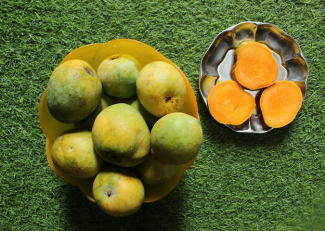
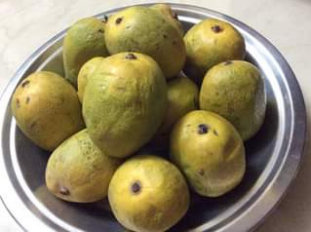



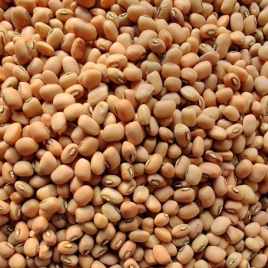







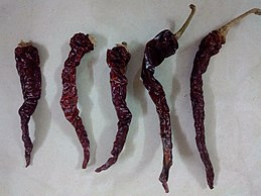


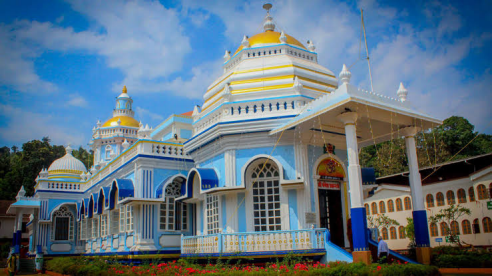



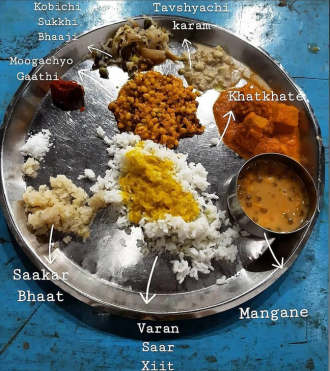



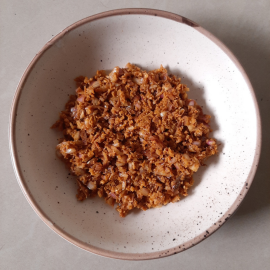

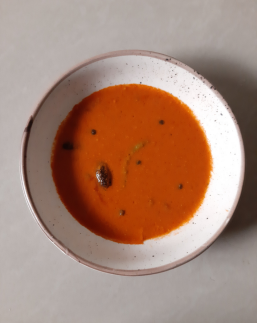

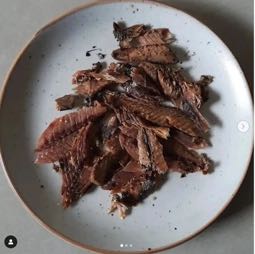













Comments